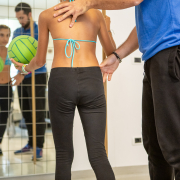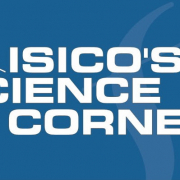Morphological differences in scoliosis curvatures as a cause of difficulties in its early detection based on angle of trunk inclination
Every year, the Italian Scoliosis Study Group selects the best published papers on conservative spine treatment from the global scientific literature.
Here is the abstract from one of these papers.
Morphological differences in scoliosis curvatures as a cause of difficulties in its early detection based on angle of trunk inclination
Marek Kluszczyński, Dariusz Mosler, Jacek Wąsik
BMC Musculoskelet Disord. 2022 Nov 2;23(1):948. doi: 10.1186/s12891-022-05878-6
Abstract
Introduction: The three dimensional deformation of the spine in scoliosis is specific for a given child with regard to the number and length of curvatures, their degree of rotation and the size of the curvature angle. Early diagnosis of scoliosis in a clinical examination according to the Adams test depends on the correlation between the angle of trunk inclination (ATI) and the Cobb angle and the adopted diagnosis criterion. The aim of the study was to demonstrate the need to adopt different diagnostic criteria for ATI depending on the age and location of scoliosis. Moreover, the observed differences in the ATI/Cobb correlation became the basis for the proposal to introduce the concept of low, medium and high-rotated of curvature to the clinical description of scoliosis.
Materials and methods: The group consisted of 229 children who were first examined, aged 6 to 17 years, with an average age of -11.57 years (SD ± 3.26), with symptoms of idiopathic scoliosis. The correlation of the criteria for the diagnosis of scoliosis in the ATI 7° clinical trial with a Cobb angle of 10° three dimensional in the X-ray image was used to distinguish three types of curvature/scoliosis, i.e., low, medium and high rotation. The frequencies of each type were compiled for three age groups and three scoliosis locations. Moreover, the degree of vertebral rotation according to the Perdriolli (AVR) of curvature was correlated with the Cobb angle and ATI. A one-way logistic regression model was used to assess the effectiveness of scoliosis detection in children based on the measurement of the ATI angle alone and the measurement of both ATI and Cobb angles.
Results: Low-rotated curves were most often found in the age groups of 6-9 and 10-12 years in 65.6% and 71.4% of patients, respectively (p < 0.05). Medium-rotated curvatures were most common in the age group of 13-17 years – 51.6%. With regard to the localization of scoliosis, the low-rotated curvatures were significantly more frequently (p < 0.05) found in the lumbar and thoracolumbar spine. Moreover, the univariate regression model for ATI showed that we could detect scoliosis best by taking the cut-off point of 5° and the mathematically determined Cobb angle was 9.5°. Patients with ATI ≥ 7° had significantly higher AVR values than those with ATI < 7°, and the ATI/AVR correlation was of average strength.
Conclusion: The specific morphology of the scoliotic curvature of the child’s spine may be manifested by the difference in the ATI/Cobb correlation depending on the location of the scoliosis and change with age. The curvatures of the scoliosis that form can be low, medium and high-rotated, and the low-rotated curvatures were most often found in the 6-9- and 10-12-year-old groups and in the lumbar and thoracolumbar section. To increase the rate of early diagnosis of scoliosis, the results suggest the need to adopt two ATI criteria for the diagnosis of scoliosis at screening, 5° for age of 6-12 years, and when asymmetry affects the lumbar and thoracolumbar section, and 7° for the remaining children.
Keywords: Adams test; Early detection of scoliosis; Scoliosis; Vertebral rotation.





Leave a Reply
Want to join the discussion?Feel free to contribute!